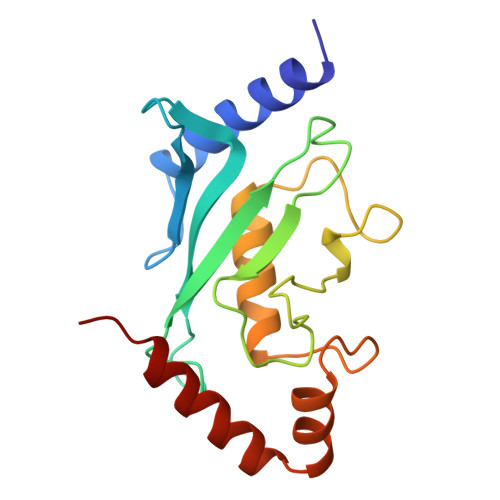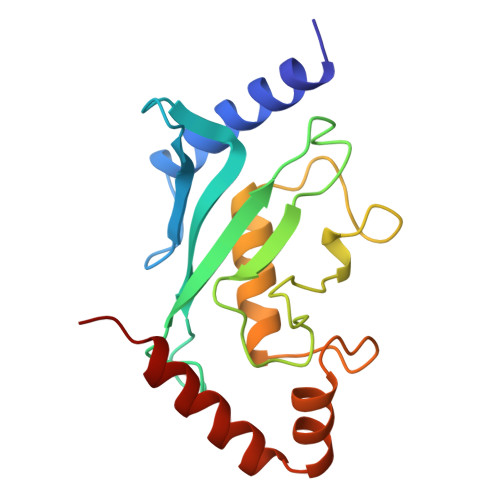Crystal structure of murine/human Ubc9 provides insight into the variability of the ubiquitin-conjugating system.
Tong, H., Hateboer, G., Perrakis, A., Bernards, R., Sixma, T.K.(1997) J Biological Chem 272: 21381-21387
- PubMed: 9261152
- DOI: https://doi.org/10.1074/jbc.272.34.21381
- Primary Citation of Related Structures:
1U9A, 1U9B - PubMed Abstract:
Murine/human ubiquitin-conjugating enzyme Ubc9 is a functional homolog of Saccharomyces cerevisiae Ubc9 that is essential for the viability of yeast cells with a specific role in the G2-M transition of the cell cycle. The structure of recombinant mammalian Ubc9 has been determined from two crystal forms at 2.0 A resolution. Like Arabidopsis thaliana Ubc1 and S. cerevisiae Ubc4, murine/human Ubc9 was crystallized as a monomer, suggesting that previously reported hetero- and homo-interactions among Ubcs may be relatively weak or indirect. Compared with the known crystal structures of Ubc1 and Ubc4, which regulate different cellular processes, Ubc9 has a 5-residue insertion that forms a very exposed tight beta-hairpin and a 2-residue insertion that forms a bulge in a loop close to the active site. Mammalian Ubc9 also possesses a distinct electrostatic potential distribution that may provide possible clues to its remarkable ability to interact with other proteins. The 2-residue insertion and other sequence and structural heterogeneity observed at the catalytic site suggest that different Ubcs may utilize catalytic mechanisms of varying efficiency and substrate specificity.
Organizational Affiliation:
Netherlands Cancer Institute, Plesmanlaan 121, 1066 CX, Amsterdam, The Netherlands.
















